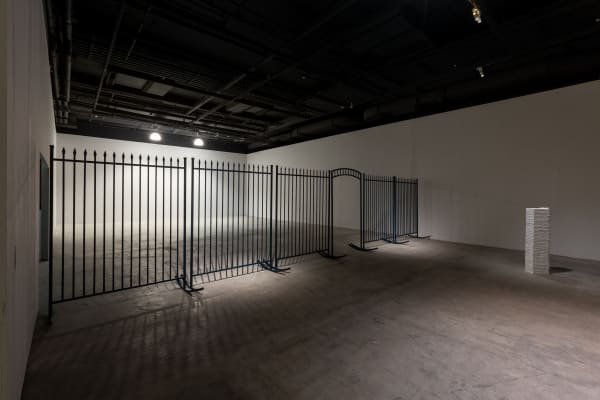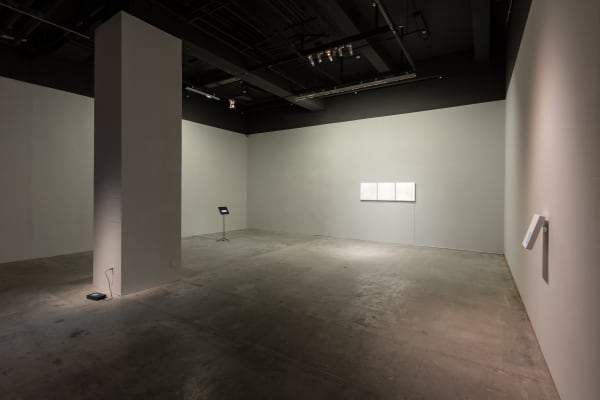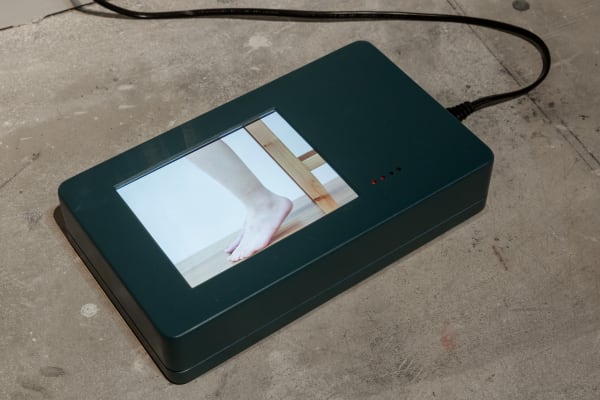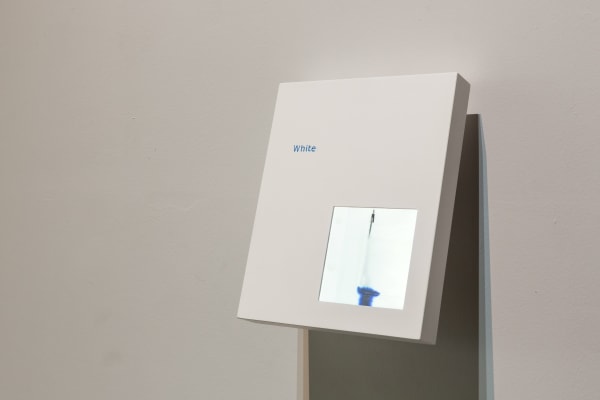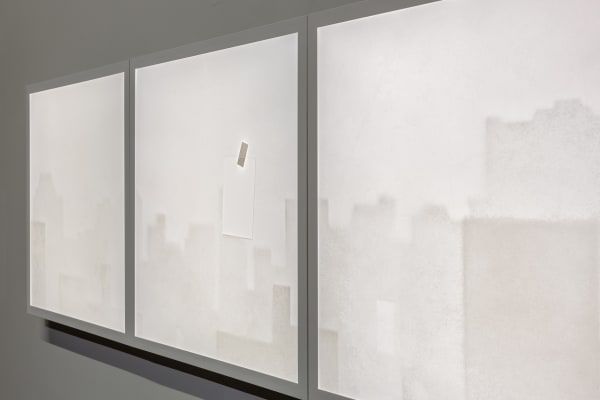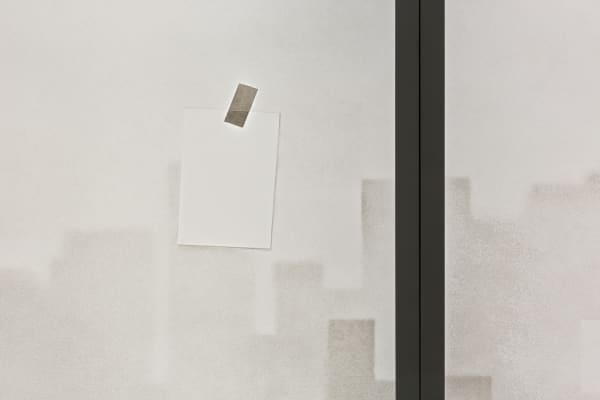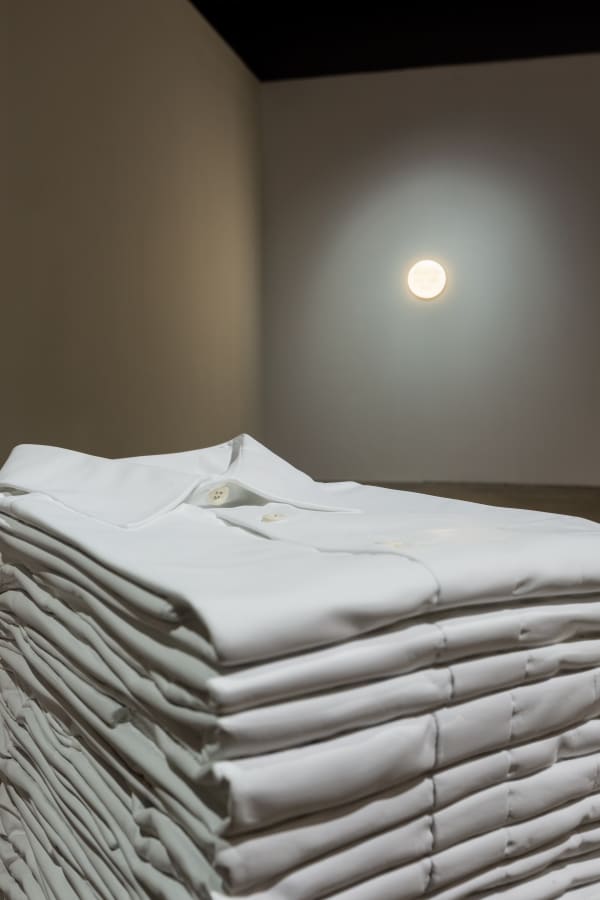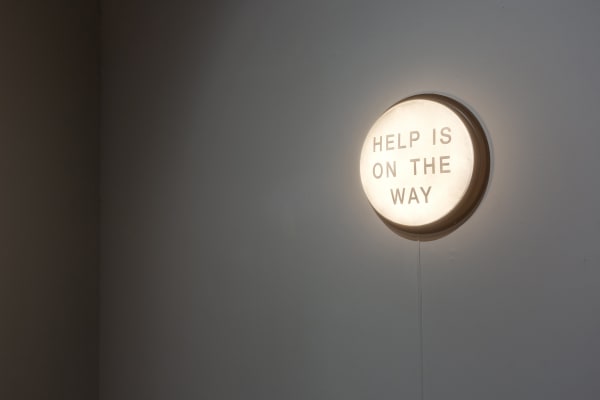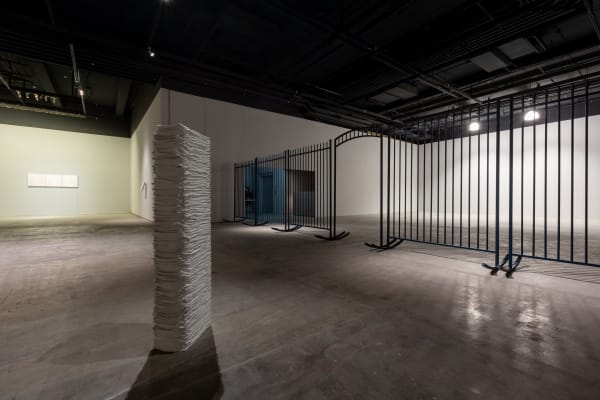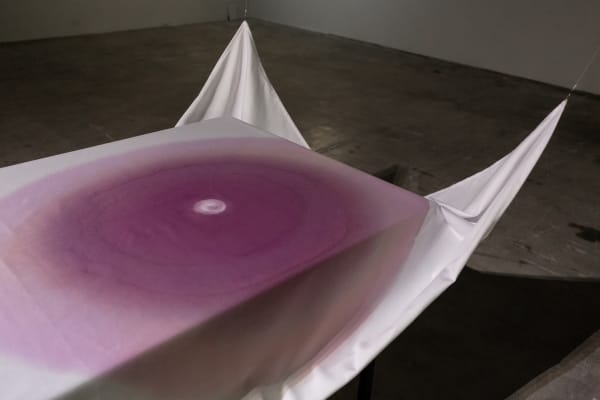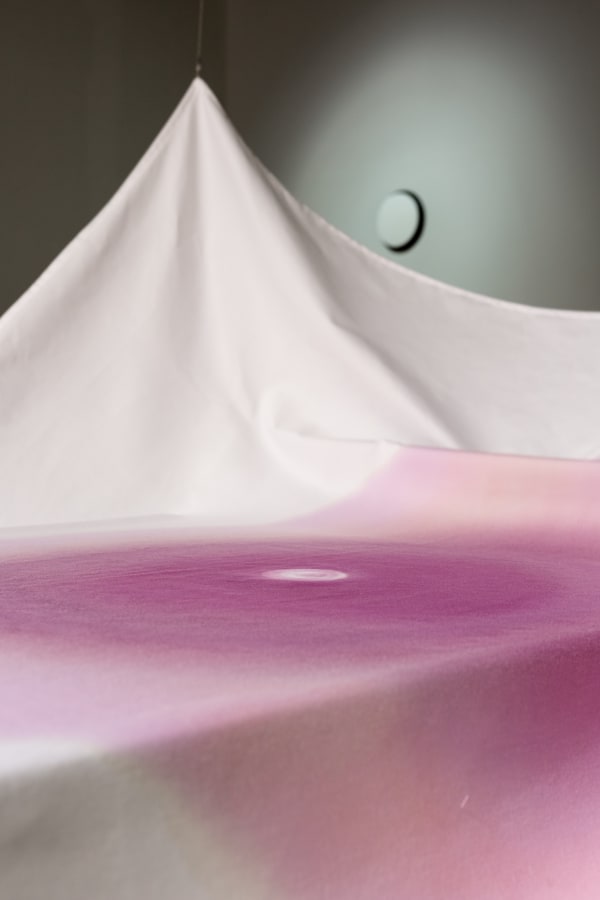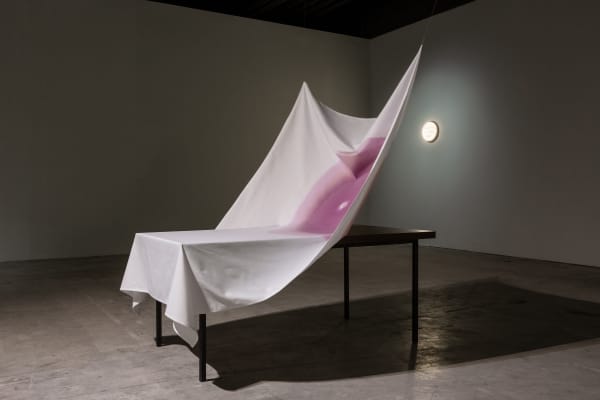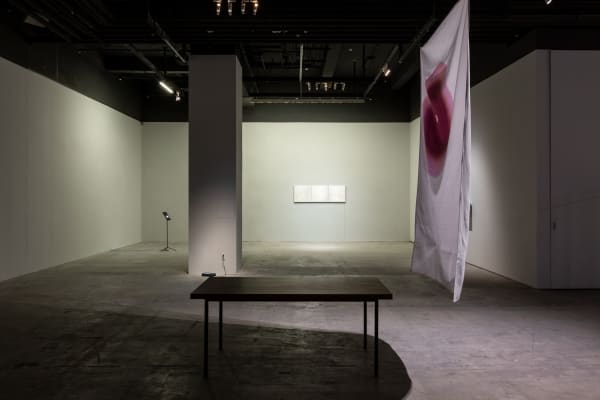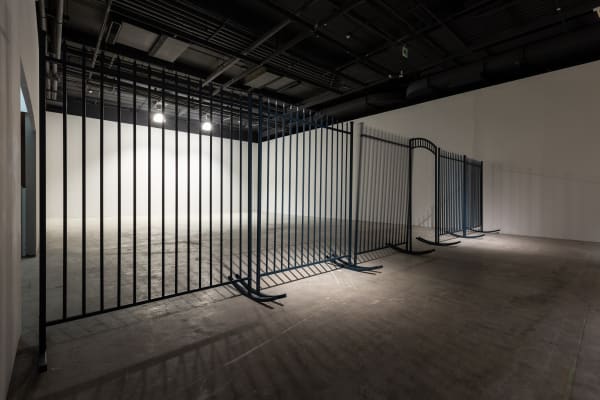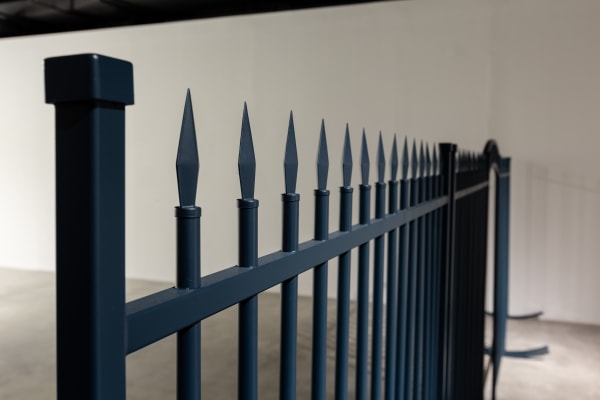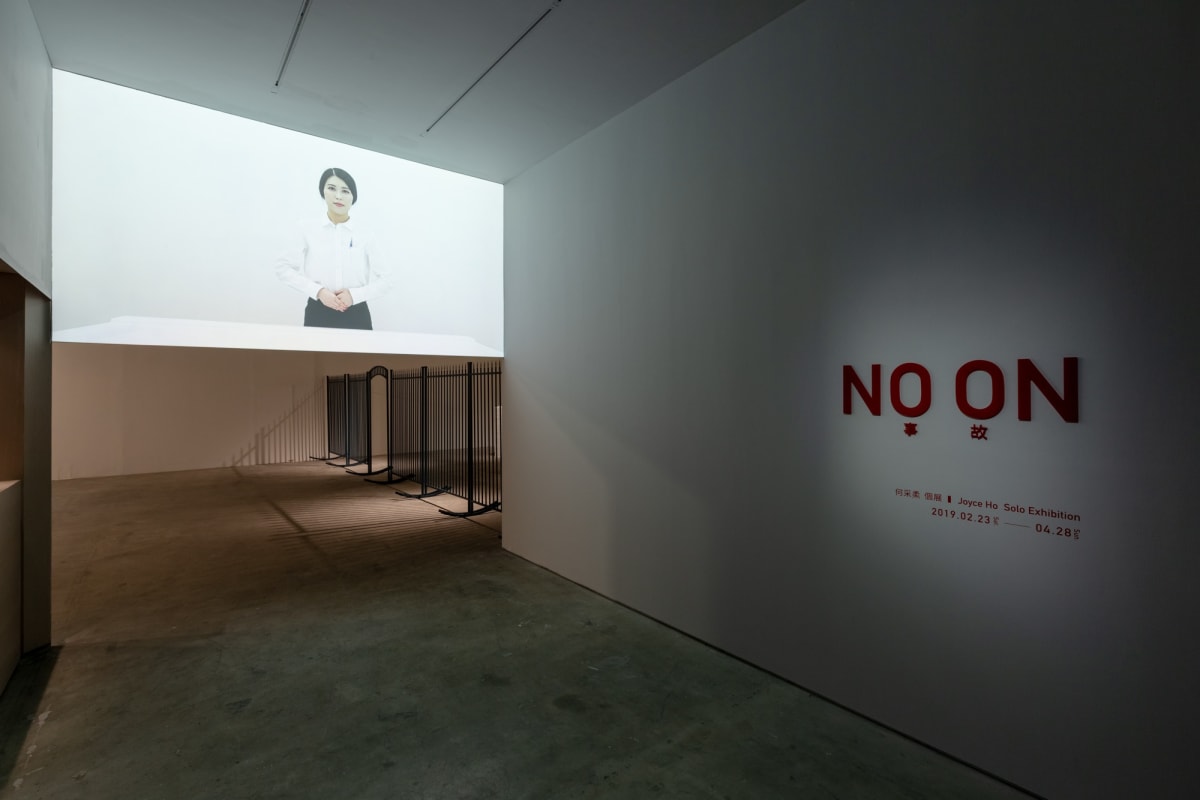NO ON: Joyce Ho Solo Exhibition
From the tenderness to the obstinate gripping tension; from being entranced by a stare to the sensation of feeling spaced out in a void; from the textof a story to the reading of an incident, these endpoints of differences in characteristics connect and create a “discrepancy.” It displays an undulating cadence in the narrative and infuses meanings to the anticipation in between, similarly to an exhilarating prelude developed into a mediocre ending or how the concealed surprise is unveiled in the indifferent everyday. If the narrative is a line, this line is formed by numerous connected dots when the pen and surface touch. But our naked eye can only see the line that is completed; our brain processesand archives it as an image of the linked endpoints. To push such connotation forward, that line, that every scene happening in the narrative exists only for us to perceive and feel the dots; to accommodate a poetic stroll on such narrative and thus think and make choices between the “in-between.”
The Chinese title of Joyce Ho’s exhibition, 事故(literally “incident”), is a witty wordplay that invites interpretations. The myriad of possibilities, just to state out the obvious three,includes the double meaning of the words, homophony of the diction and the reading direction. Its English title NO ONcan be read as two separate words NOand ON, or as one wordNOON. In the forming of the word and its nuance in its kerning and syllable, the title of the exhibition lingers between the distance created by a spacebarand thereforecreating the scope of a discrepancy. This scope becomes the first space Ho came across in her practiceandthe prelude and the starting point of the exhibition represented by a line. This way of manipulating the multiple meanings of symbols might seem straightforward at first. However, in contemporary society when symbols and their interpretations are disordered, this simple method revealed through the exhibition and the space attracts and draws viewers into perceiving their most intimate everyday stories.
Before entering the exhibition space, there is a large digital billboard acting as a service guide for the exhibition. This combination of installation and performance imagery is a necessary starting point of the exhibition. After perusing the preface, we enter the exhibition space where lights flicker and flash. The flickering of lights interferes with the audience’s vision and throwing them off balance, offering an opportunity that they might regain and acquire a new sense of the space. The colossus that comes into view after the constant sense of wavering evokes a distant memory where we once as children nestled in a cradle; at the same time, it is also a fence erected as a barricade. For safety, viewers would speed up in order to pass through the dangerous rocking crib. In tandem, a piece of cloth floats through the air, drifting and falling slowly towards the table before floating again. Staring in awe, viewers are exposed to these repeated movements, enjoying this semi-automatic exhibition. The aforementioned events are merely descriptions of the exhibition. One might expect “incidents” to happen, yet it leaves to the viewers to draw the line to the other end of the narrative so as to let “stories” unravel and to own this corner of dots and lines.
Joyce Ho
Joyce Ho received her M.A. in studio arts from the University of Iowa. She is an interdisciplinary artist with an emphasis in painting, sculpture, and theatre. Integrating details of decomposition movements, epitomes of everyday habits, and rich and illusory light and shadow, Ho's painting, installation, and video works always delineate the intimate yet distant relationship and tension between people and reality. Her unique and powerful work simultaneously envelops her audience while keeping them in a state of being confronted, rendering the quotidian moment depicted in her work an immediate landscape or ritual.
Joyce Ho has exhibited extensively, such as the Kobe Biennale, Museum of Contemporary Art Shanghai, Today Art Museum, and Museum of Fine Arts Shanghai, and Asian Arts Biennale, and Busan Biennale. Since 2010, She has also worked as a scriptwriter and theatre director. She has directed theatre performances including “Room 206,” “Four Seasons,” and “Semi-transparent.” Recent exhibitions include the 9thAsia Pacific Triennial of Contemporary Art, Queensland Art Gallery | Gallery of Modern Art, Brisbane, Australia (2018);; Dream about the Edge, IT Park Gallery, Taipei (2017); Art Basel Hong Kong: Galleries & Encounters sectors, Hong Kong (2017); Everything You Need To Know About The FY Foundation: An Exhibition, You Space, China (2017); and Semitransparent Scenery, Kirishima Open-Air Museum, Kagoshima, Japan (2016).






